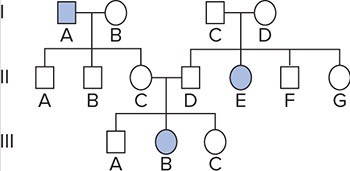Roberts Syndrome is an extremely rare genetic disorder that is characterized by mild to severe prenatal retardation or disruption of cell division, leading to malformation of the bones in the skull, face, arms, and legs. Shown below is a pedigree for a family with Roberts Syndrome. Based on this pedigree Roberts Syndrome is inherited as a(n) ________ trait? McGraw-Hill Education
McGraw-Hill Education
A. autosomal recessive
B. sex-linked dominant
C. autosomal dominant
D. random
E. sex-linked recessive
Answer: A
You might also like to view...
A keystone species
a. has a disproportionately large effect on a community relative to its abundance. b. controls the prey species. c. may increase or decrease the number of prey species in a community. d. has a disproportionately large effect on a community relative to its abundance and may increase or decrease the number of prey species in a community. e. has a disproportionately large effect on a community relative to its abundance, controls the prey species, and may increase or decrease the number of prey species in a community
Bacterial decomposition of organic nitrogen results in the production of:
a. ammonia. b. nitrates. c. nitrites. d. atmospheric nitrogen. e. urea.
A chronic, local allergy such as hay fever is considered ________.
A. systemic anaphylactic B. atopic C. delayed D. T-cell-mediated E. antibody-mediated
To what does cAMP bind once it is made by adenylyl cyclase in response to glucagon and/or epinephrine?
a) it binds to adenylyl cylase b) It binds to the allosteric site on the regulatory subunits of protein kinase A. c) It binds to the allosteric site on the catalytic subunits of protein kinase A. d) It binds to phosphorylase kinase.